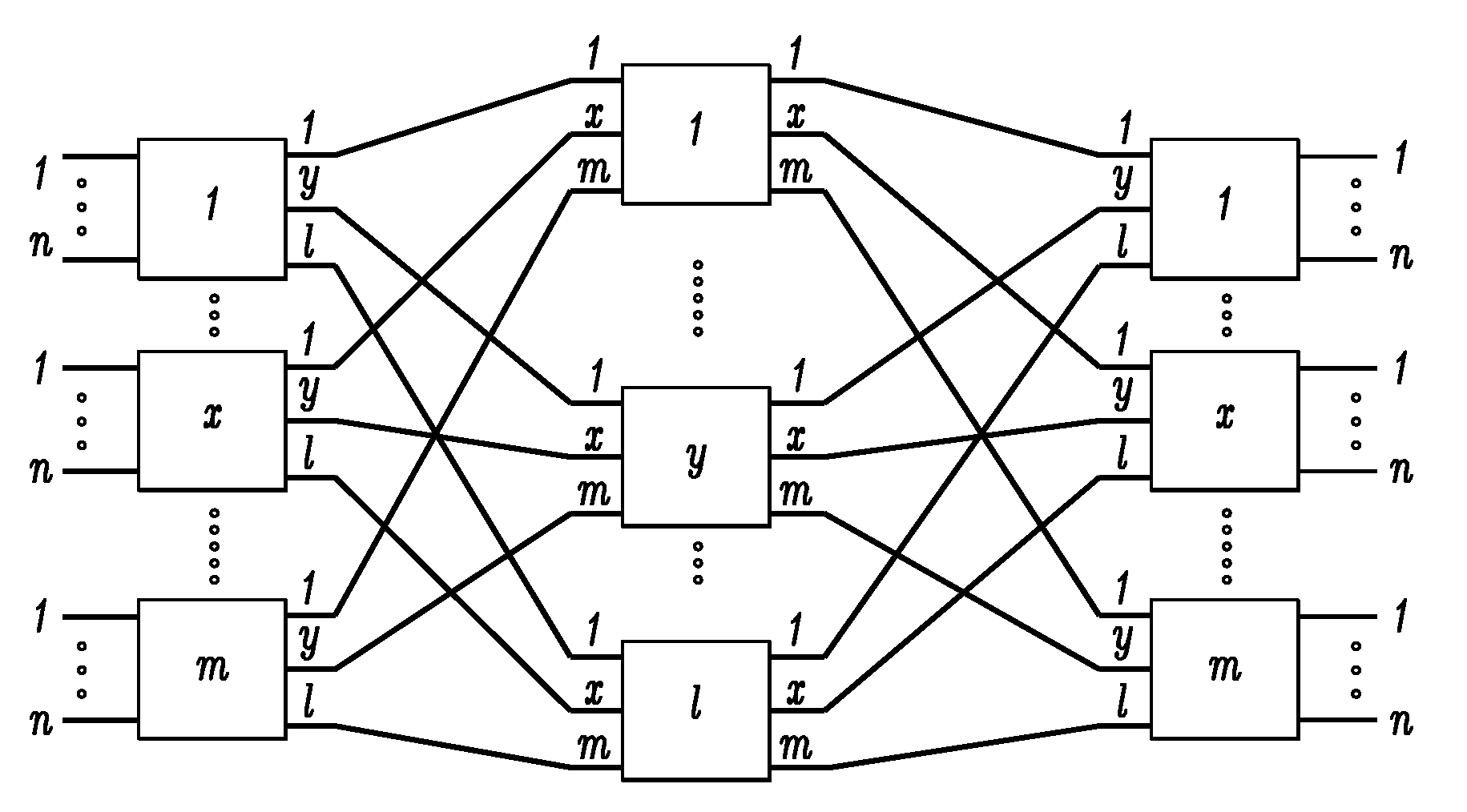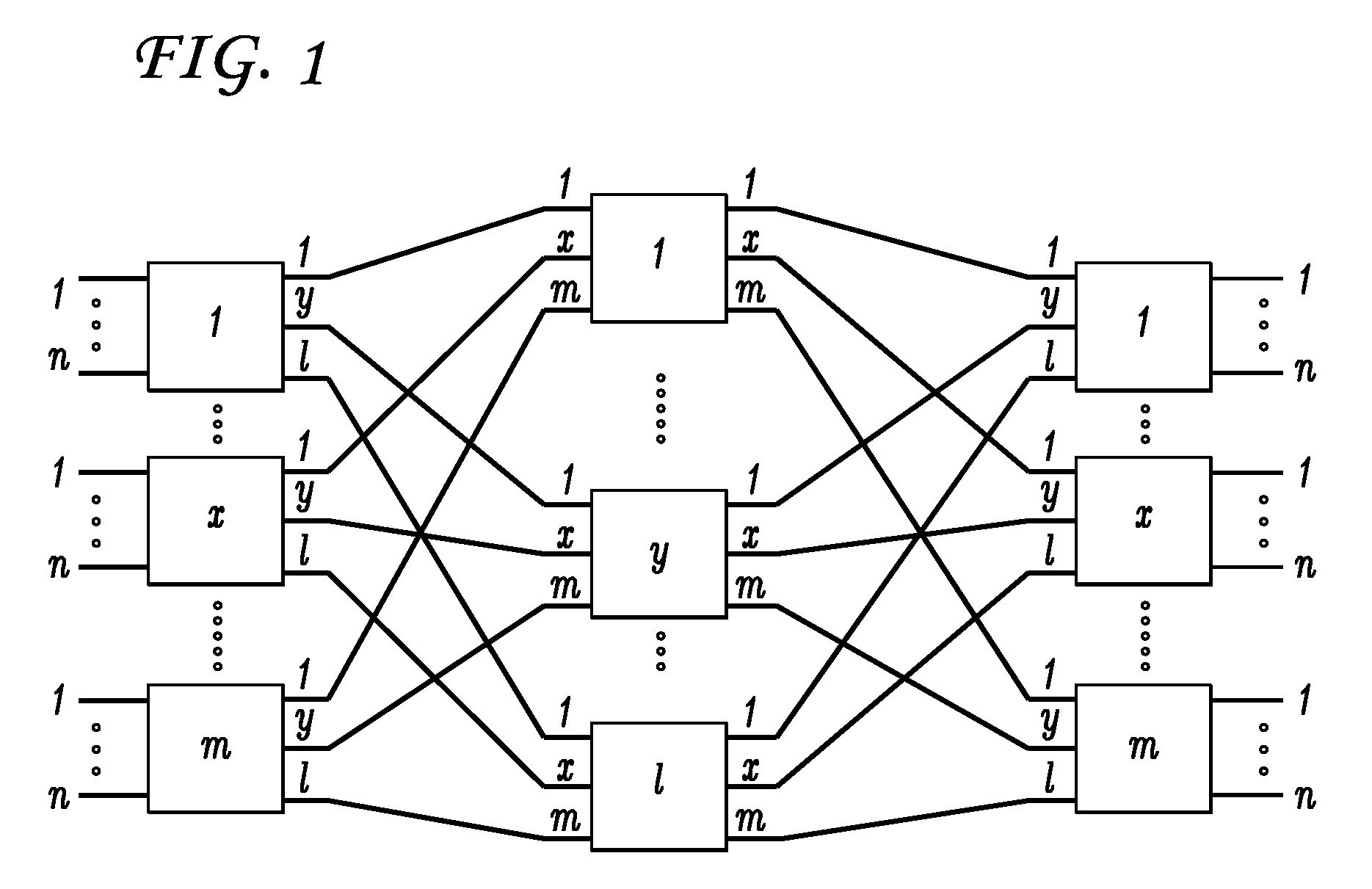Load Balancing Algorithms in Non-Blocking Multistage Packet Switches
a multi-stage packet switch and load balancing technology, applied in the field of load balancing algorithms in multi-stage packet switches, can solve the problems of reduced switching fabric hardware complexity, increased complexity of circuit setup algorithms, and inability to readily apply circuit setup algorithms in clos packet switches, etc., to achieve maximum fabric utilization
- Summary
- Abstract
- Description
- Claims
- Application Information
AI Technical Summary
Benefits of technology
Problems solved by technology
Method used
Image
Examples
Embodiment Construction
[0024]The present invention pertains to load balancing algorithms for balancing data flow in a multistage non-blocking fabric (e.g. packet switching networks). A non-blocking fabric is defined as a fabric in which all the traffic for a given output gets through to its destination as long as the output port is not overloaded. These algorithms allow for maximization of fabric utilization while providing for a guaranteed delay. In these algorithms, either inputs or input SEs may balance traffic, and flows to either output SE or outputs may be balanced separately. A fabric comprises packet switches. A packet switch is a system that is connected to multiple transmission links and does the central processing for the activity of a packet switching network where the network consists of switches, transmission links and terminals. The transmission links are connected to network equipment, such as multiplexers (MUX) and demultiplexers (DMUX). A terminal can be connected to the MUX / DMUX or it c...
PUM
 Login to View More
Login to View More Abstract
Description
Claims
Application Information
 Login to View More
Login to View More - R&D
- Intellectual Property
- Life Sciences
- Materials
- Tech Scout
- Unparalleled Data Quality
- Higher Quality Content
- 60% Fewer Hallucinations
Browse by: Latest US Patents, China's latest patents, Technical Efficacy Thesaurus, Application Domain, Technology Topic, Popular Technical Reports.
© 2025 PatSnap. All rights reserved.Legal|Privacy policy|Modern Slavery Act Transparency Statement|Sitemap|About US| Contact US: help@patsnap.com



